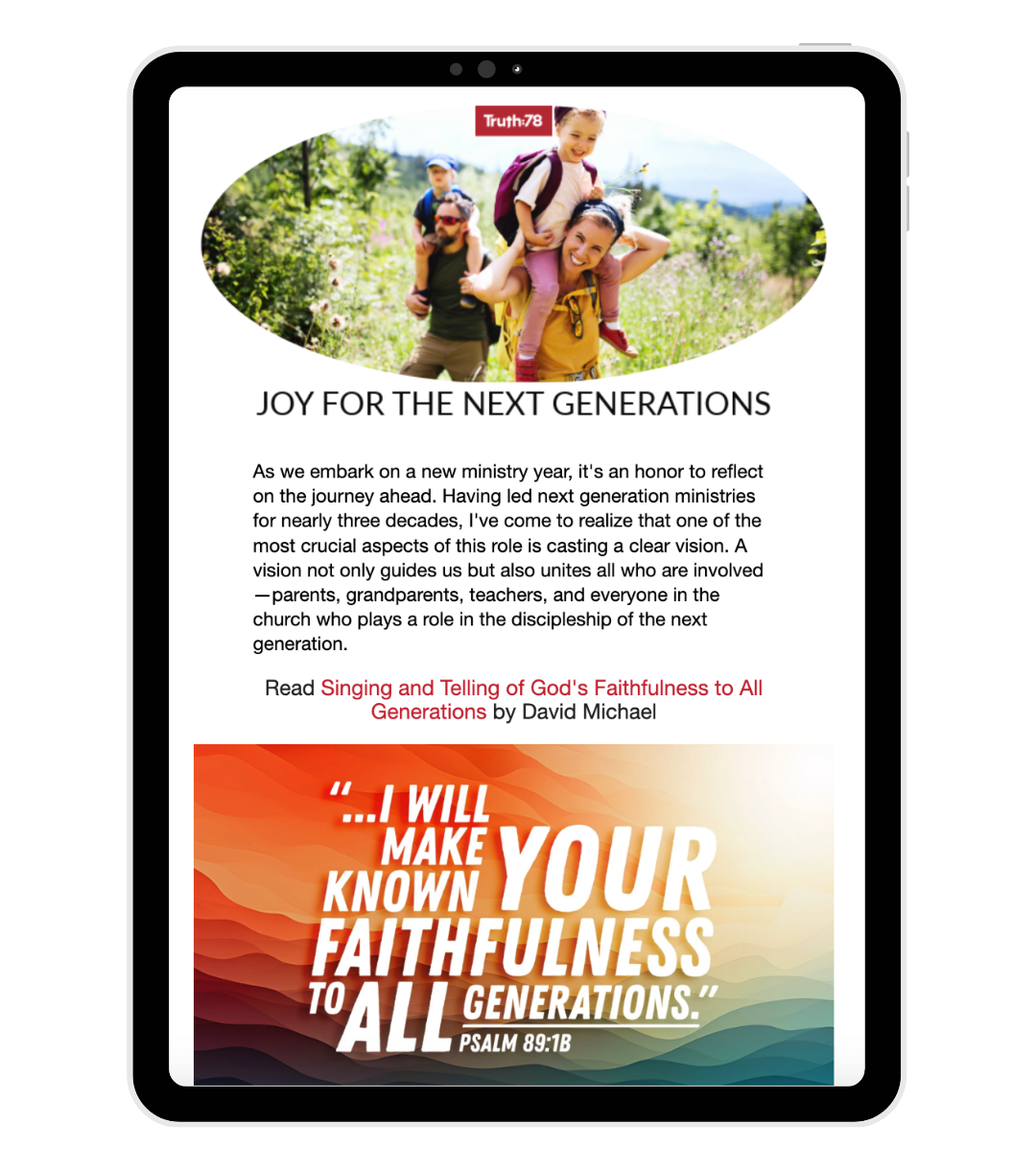 Read Part 1 of this post: A Vision for Leading Children in Worship
Read Part 1 of this post: A Vision for Leading Children in Worship
Leading children in worship is different than leading adults in worship because children differ in their ability to:
- Understand God, themselves, and their relationship to Him.
- Understand language, ideas and how to talk about God.
So worship leaders must lead in ways that are developmentally age appropriate. Make sure to check out the curriculum introduction because the authors often give insights into what would be age appropriate. And leaders must take into account children who are not yet believers, as well as give thought how to nurture the faith of the children by example and introduce children to a language by which they may learn to worship rightly now and in the future.
So how do we plan a time of worship with children?
- Pray for guidance and help by the Holy Spirit (Psalm 127:1, John 14:26)
- Be well acquainted with the overall scope of the curriculum and specific lesson for the day.
- Determine the focus of the worship time (reflective, repentant, responsive to the lesson, rejoicing in our great God…)
-
Know what the lyrics express and consider:
- Do they fit well with the lesson, curriculum, and focus of worship?
- Are they filled with big and glorious truths, while still being understandable to the children?
- Do they build faith in our amazing God and the wonders of redemption?
- Will they benefit the children if they sing them over and over during the week? During the next year? During the next 10 years? Are they worth memorizing?
What kinds of songs should be considered?
- Favorite Sunday school songs of substance
- New, fresh worship songs written specifically for children (Psalm 96:1)
- Scripture songs (check out the Fighter Verses songs and the Let the Little Children Sing Scripture songbook)
- Traditional hymns
- Songs from your all-church gatherings
- Songs from other cultures (perhaps have missionaries teach a song)
Remember, words are important, so take time to help them understand what they are singing.
A Sample Format for Planning Worship
- Call to Worship: Helps us draw near and vertically focus on God
- Praise and Adoration: Songs directed to God or about His character
- Teaching: Teach new songs, share hymn story, lyric explanations, hand motions, etc.
- Response: Songs of commitment, blessing, witness, and prayer

Don’t forget to include prayer and Scripture (either read or recited) in your plan.
Be intentional in your planning. Determine to plan and lead worship in a way that helps the children grow in their knowledge, love, and trust of God.
If you have a large age range in your class, you might consider songs that echo or repeat phrases (e.g., This is the Day, Rejoice in the Lord Always, Humble Yourself in the Sight of the Lord…) You could have the older children help lead hand motions, hold visuals, or use rhythm or accompaniment instruments. It is a great opportunity to teach them about what worship teams do and why.
Make sure to prepare lyric sheets/overheads or visuals for younger children (following copyright laws) ahead of time. Show up early. Have instruments ready and tuned prior to the worship time. Open and close with prayer. Let students see you with an open Bible. That communicates more than you might think.
Learn More
To learn more about worship leading, I encourage you to listen to my seminar, Leading Children in God-Centered Worship, where I share more examples and practical suggestions. For specific song sources, check the end of the seminar handout.
Seminar Audio: Leading Children in God-Centered Worship
Seminar Handout: Leading Children in God-Centered Worship
Special thanks to Pam Grano for developing many of the original ideas shared here.
Read Part 1 of this post: A Vision for Leading Children in Worship






